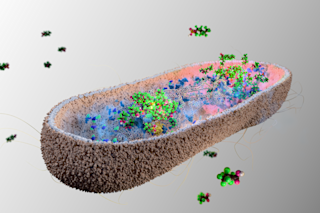Researchers have revealed that seasonal flu and swine flu cause different symptoms because they have different destinations in the body: the seasonal flu lodges itself mainly in the nasal passages, while the swine flu virus travels into the trachea and lung, and even makes its way to the intestines. It also replicates more quickly and causes more damage than the seasonal flu, according to a pair of studies published in Science. Flu viruses wreak their havoc by binding to molecules on the surface of cells in mammals' respiratory tracts, including humans. But the researchers found that the swine flu binds to surfaces that are unusually deep in the respiratory tract, such as the branches within the lungs known as bronchioles. The scientists used ferrets for the experiments because the animals respond to the flu much the way humans do. Research teams in the United States and the Netherlands found that ...
Swine Flu Goes Deeper Into the Body Than Regular Flu—Even Into Intestines
Discover the distinct swine flu symptoms and how they differ from seasonal flu. Learn more about their impacts on the respiratory system.
More on Discover
Stay Curious
SubscribeTo The Magazine
Save up to 40% off the cover price when you subscribe to Discover magazine.
Subscribe













